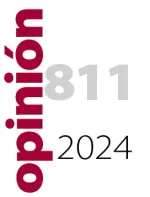The catalytic role of European cities in climate adaptation


As the consequences of global warming intensify, European mayors are increasingly embracing the need to adapt their cities to the growing impacts of climate change. Specific metrics to guide the implementation of adaptation plans, improved governments frameworks recognising the prominent role of cities, and access to public financing will be key to achieving climate resilience by 2050.
With 2023 registered as the warmest year in recorded history, climate action remains a hot topic in Europe. Generally speaking, while national governments are not keeping up with the challenge ahead, subnational governments have demonstrated a higher degree of commitment. This is what emerges from the Eurocities Pulse Mayors Survey 2024, the annual survey launched by the European city network across its membership, according to which climate action is by far the top priority for European mayors.1
While mitigation has long overshadowed adaptation in the domain of urban (and global) climate action, this trend has recently started to change. With 75% of European citizens living in cities, the (so far) collective incapacity at the global scale to mitigate global warming is leading mayors to increasingly broaden the spectrum of their policy measures and embrace the need to adapt their cities to the growing impacts of climate change. Nonetheless, the landscape of climate adaptation across European cities is characterised by the lack of a more clearly defined adaptation goal at the EU and member states level, an improved system of multilevel governance, and the generalised lack of access to financing.
According to the European Climate Risk Assessment, Europe is the fastest warming continent in the world. It is not surprising therefore that up to 90% of Eurocities members have adopted climate adaptation plans to protect their citizens. Such evidence of political commitment at the local level highlights the action already being taken by cities to progress towards European targets on climate. With subnational governments currently implementing 70% of EU legislation, the delivery of the EU Adaptation Strategy geared towards reaching climate resilience by 2050 chiefly depends on the catalytic role of cites. Yet one of the main recommendations emerging from the Eurocities Pulse survey is the need for a more clearly defined adaptation goal - not just strategies - to drive actions at all levels.
On the one hand, as global climate policymaking is currently shifting its attention from ambition to implementation, the definition of comprehensive climate adaptation plans needs to be complemented and supported by the provision of sound governance frameworks, effective coordination mechanisms, and adequate resource allocation. This is particularly relevant since, despite the development of national adaptation strategies in most EU member states, local adaptation is mainly driven by subnational governments. As such, it is concerning that the EC Communication on Managing Climate Risks - laid out to respond to the European Climate Risk Assessment - does not properly acknowledge the catalytic role of cities in bridging the gap between ambition and implementation across EU member states.
On the other hand, as the responses provided to the Eurocities Pulse survey attest, the diversity of climate hazards faced by cities across Europe is wide. Heatwaves, flooding, drought, rising sea level, and wildfires are testimony to the distinct geography of the region, the local specificity of each climate hazard, and at the same time the generalised threat that climate change poses to urban populations, infrastructure, and assets. This dovetails with a broader consideration on the difficulties of outlining a clearly defined adaptation goal - as negotiations at the level of global climate governance have demonstrated - explaining to some degree the gap in policy development between mitigation and adaptation. While mitigation policies are measured through local estimates of emissions reduction contributing to a global, national, or regional goal, the contextualised and multifaceted nature of adaptation measures hinders the possibility of identifying a single metric for success.
The equally relevant other side of the coin of urban climate adaptation is the access (or lack thereof) to financing. The UNEP assesses that the annual finance gap for adaptation sways between USD 194 billion and USD 366 billion. Of the annual average of almost USD 1.3 trillion in 2021/2022 identified in the Global Landscape of Climate Finance 2023, mitigation measures attracted 91% of the tracked financial flows, outlining the urgency of heightening funding for adaptation measures, which heavily rely on the mobilisation of public sector resources. In this framework, the mayors surveyed by Eurocities identified access to public funding and the definition of financing models as the first and third greatest challenges to implementing adaptation measures. While it is understandable that private investors prioritise mitigation initiatives over adaptation measures considering the economic profit deriving from the energy transition and energy saving, the present and future (particularly in a high emissions scenario) cost of extreme weather events impacting an increasingly urban world provides a compelling case for increased public financing for climate adaptation at the local level. Moreover, the European Environment Agency has clearly stressed in a 2023 report the economic benefits of investing now in adaptation measures, compared to not acting at all.
Against the backdrop of this complex scenario, it is interesting to note the top three adaptation priorities identified by mayors in the survey, namely greening and urban vegetation, energy efficiency and decarbonisation, and nature-based solutions and biodiversity. Even though mitigation and adaptation have traditionally been interpreted as two distinct sets of policy measures, this differentiation might blur in the years ahead. As the concept of climate resilience suggests, adaptation in the short run and mitigation as a way of adapting in the long run are two sides of the same coin.
To conclude, the fact that mayors consulted in the Eurocities Pulse survey identified climate change and energy transition as the top area where they would like to see the next EU budget supporting them adds further weight for more to be done. Cities are stepping up efforts to share knowledge, build evidence, and raise awareness at the EU level about what is needed to further urban climate adaptation. This imperative will have to be closely followed as the new European Commission and new European Parliament come into office amidst geopolitical tensions and a potential climate backlash. The development of a new EU Climate Adaptation Plan and EU Water Resilience Strategy, outlined by the Commission President, Ursula von der Leyen, in her political guidelines for the Commission’s mandate, will be a key test in this regard.
Notes:
1- Eurocities and the CIDOB’s Global Cities Programme have joined forces, with the support of Barcelona City Council, to analyse the policy implications of the Eurocities Pulse.
Keywords: Cities, climate, Europe, EU, resilience, adaptation, mitigation, governance, European Commission
All the publications express the opinions of their individual authors and do not necessarily reflect the views of CIDOB or its donors